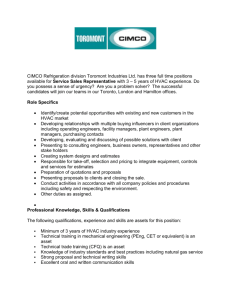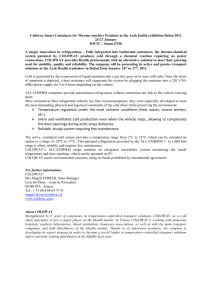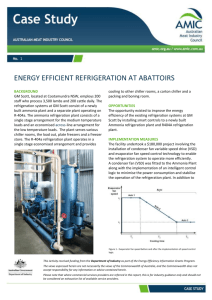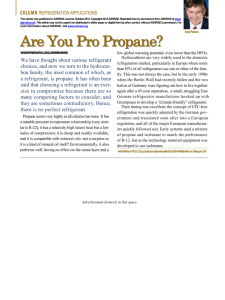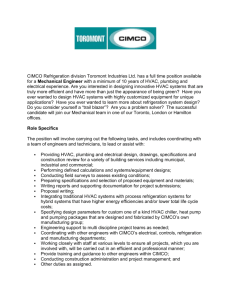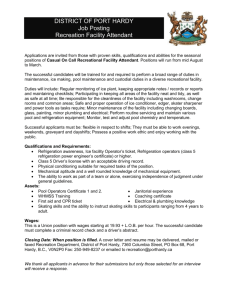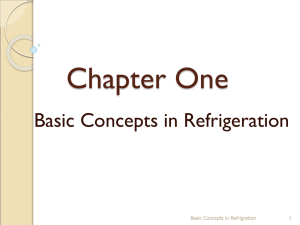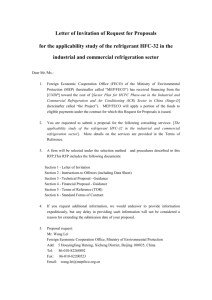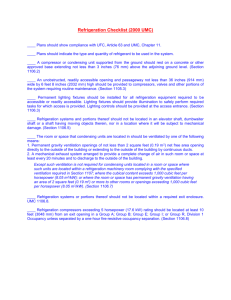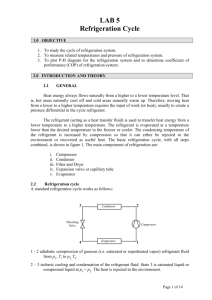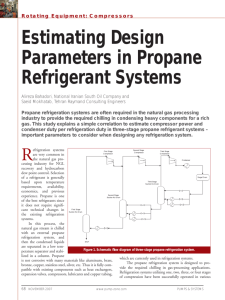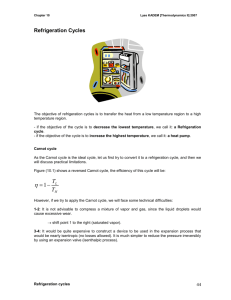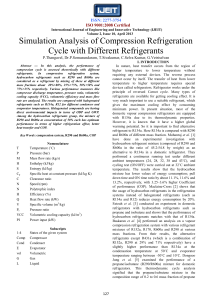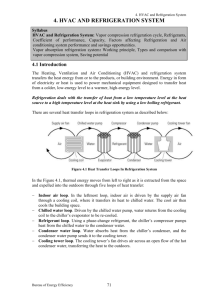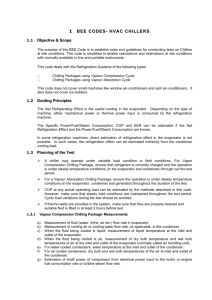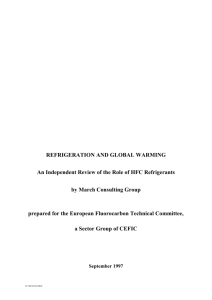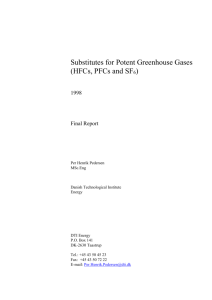College Course Outcomes
advertisement
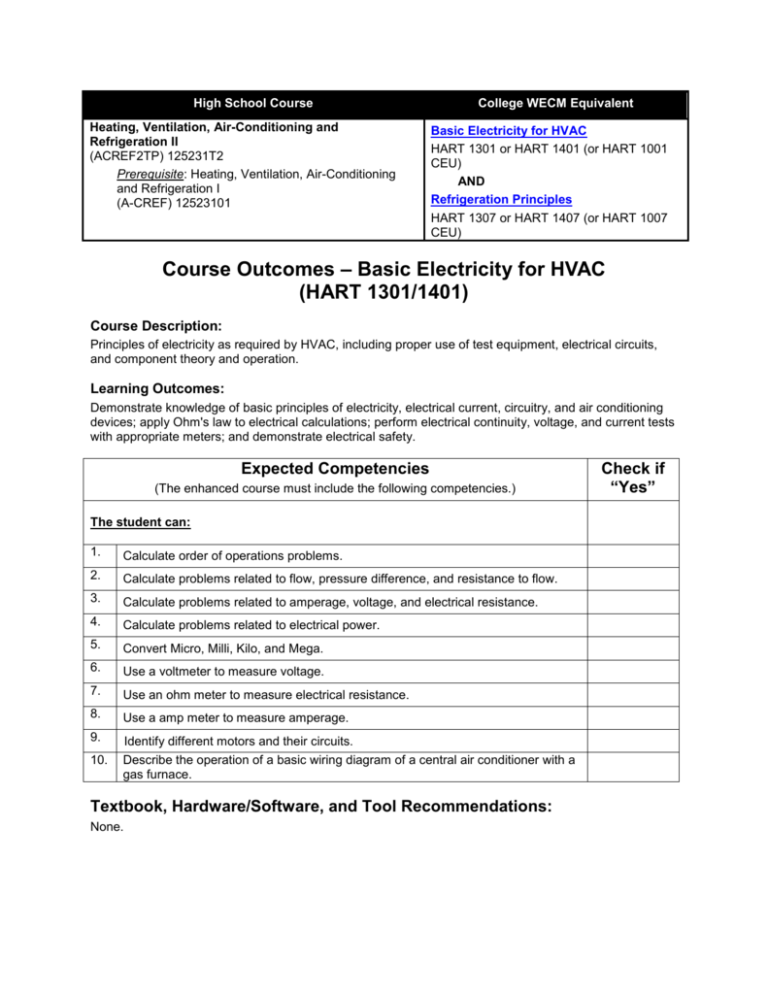
High School Course Heating, Ventilation, Air-Conditioning and Refrigeration II (ACREF2TP) 125231T2 Prerequisite: Heating, Ventilation, Air-Conditioning and Refrigeration I (A-CREF) 12523101 College WECM Equivalent Basic Electricity for HVAC HART 1301 or HART 1401 (or HART 1001 CEU) AND Refrigeration Principles HART 1307 or HART 1407 (or HART 1007 CEU) Course Outcomes – Basic Electricity for HVAC (HART 1301/1401) Course Description: Principles of electricity as required by HVAC, including proper use of test equipment, electrical circuits, and component theory and operation. Learning Outcomes: Demonstrate knowledge of basic principles of electricity, electrical current, circuitry, and air conditioning devices; apply Ohm's law to electrical calculations; perform electrical continuity, voltage, and current tests with appropriate meters; and demonstrate electrical safety. Expected Competencies (The enhanced course must include the following competencies.) The student can: 1. Calculate order of operations problems. 2. Calculate problems related to flow, pressure difference, and resistance to flow. 3. Calculate problems related to amperage, voltage, and electrical resistance. 4. Calculate problems related to electrical power. 5. Convert Micro, Milli, Kilo, and Mega. 6. Use a voltmeter to measure voltage. 7. Use an ohm meter to measure electrical resistance. 8. Use a amp meter to measure amperage. 9. Identify different motors and their circuits. 10. Describe the operation of a basic wiring diagram of a central air conditioner with a gas furnace. Textbook, Hardware/Software, and Tool Recommendations: None. Check if “Yes” Course Outcomes – Refrigeration Principles (HART 1307/1407) Course Description: An introduction to the refrigeration cycle, heat transfer theory, temperature/pressure relationship, refrigerant handling, refrigeration components and safety. Learning Outcomes: Identify refrigeration components; explain operation of the basic refrigeration cycle and heat transfer; demonstrate proper application and/or use of tools, test equipment, and safety procedures. Expected Competencies (The enhanced course must include the following competencies.) The student can: 1. Define common terms used in the refrigeration industry. 2. State the specific heat for water, ice and steam. 3. Calculate order of operation problems. 4. Calculate sensible heat problems. 5. Calculate latent heat problems. 6. Calculate combination of sensible and latent heat problems. 7. Calculate tons of refrigeration. 8. Convert psia to psig. 9. Demonstrate use of the R-22 and R-410a temperature-pressure charts. 10. Demonstrate the use of safety procedures in the laboratory. 11. Describe how to control saturation temperature. 12. Determine if refrigerants are saturated, superheated or subcooled. 13. Describe the purpose of a/an: A. Evaporator; B. Condenser; C. Compressor; D. Metering device. 14. Draw a refrigeration cycle. 15. State the condition of the refrigerant as it enters and leaves each component of refrigeration cycle. 16. Describe how to charge on the low and high sides of the system. 17. Explain the dangers of charging on the high side. 18. Calibrate manifold gauges and thermometers. 19. Demonstrate how to use a gauge manifold. 20. Identify the basic components of a refrigeration cycle. Check if “Yes” Expected Competencies (The enhanced course must include the following competencies.) 21. Demonstrate how to measure superheat. 22. Demonstrate how to charge on the low side of the system. 23. Describe flash gas. 24. Describe the operation of a muffler. 25. Describe the purpose of a filter dryer. 26. Identify the suction line, hot gas line, and liquid line. 27. State the normal temperature range for an evaporator on a central air conditioner. 28. State the normal superheat at the evaporator on a central air conditioner. 29. State the normal difference in temperature between the ambient temperature and condenser temperature on a central air conditioner. 30. Determine if an air conditioner is running normally. 31. Diagnose the following refrigeration cycle problems: A. Low air flow across the evaporator; B. Low charge; C. Low air flow across the condenser; D. Overcharge; E. Restriction pass the condenser; F. Other restrictions; G. Low capacity compressor; H. Simulate low air flow across the evaporator; I. Simulate low air flow across the condenser. 32. Check the operation of an air conditioner with a low charge. 33. Simulate a refrigerant restriction past the condenser. 34. Describe the purpose of a crankcase heater. 35. List 3 toxic and 3 flammable refrigerants. 36. Apply refrigerant classifications. 37. List safety precautions when working with refrigerants. 38. Describe what happens when a refrigerant comes in contact with an open flame. 39. Discuss the hazards of releasing chlorinated fluorocarbons to the atmosphere and its effects on the ozone layer. 40. List a common application for: A. R-22; B. R-717; C. R-410a; D. R-134a. 41. Describe the ways moisture enters a system. 42. List two ways moisture may exist in refrigeration system. 43. Describe the methods for removing moisture. 44. Describe the purpose of liquid line filter dryers. Check if “Yes” Expected Competencies (The enhanced course must include the following competencies.) 45. Describe the purpose of suction line filter dryers. 46. List the harmful effects of moisture in a system. 47. Demonstrate the proper use of a vacuum pump. 48. Demonstrate how to charge on the high side of the system. 49. Discuss the causes of compressor failures. 50. Describe and demonstrate a triple evacuation. 51. Demonstrate the use of a refrigerant recovery system. Textbook, Hardware/Software, and Tool Recommendations: None. Check if “Yes”


